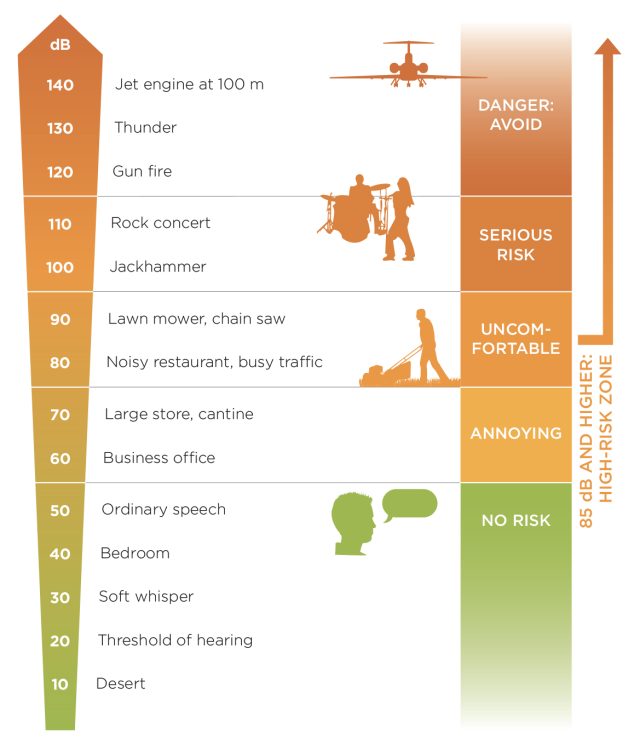
The sound scale demystified
These days, noise pollution is all around us. Although most people are generally aware of some of the dangers to hearing, many myths about noise-induced hearing loss persist.
In our daily lives, and far more often than we might think, we subject our ears to noise levels that damage our hearing. Beware, these effects could be irreversible!
Decibels generated by our everyday environments
We know that noise is harmful for our hearing and our overall health, but at what level?
From 0 to 40 dB
These are very low noise levels. Normal breathing is around 10 dB while whispering is 30 dB. This is also the maximum noise level recommended by the World Health Organization (WHO) to ensure good sleep quality.
From 50 to 65 dB
This is the average volume of speech sounds at a conversational level. 65 dB is the ambient noise level in a classroom.
From 70 to 80 dB
These are ambient noise levels found in supermarkets, cafeterias, restaurants and traffic. It is also the level of several household appliances. Noise levels of 80 dB and below are acceptable for good hearing health. There is no risk of hearing damage.

Greater than 85 dB
These are excessive noise levels that could cause hearing damage. 100 dB represents the noise level of a jackhammer, but also the maximum noise level of several electronic devices.
What are the effects of noise on hearing?
- Hearing loss, especially high-pitched sounds.
- Difficulty understanding speech, especially in a noisy environment or in groups.
- Perception of tinnitus which is a sound heard in the ears or head.
What are the effects of noise on overall health?
- Increased stress and fatigue.
- Sleep disturbance.
- Decreased performance of cognitive functions.
- Cardiovascular diseases (However, additional studies are needed to definitively establish the link between cardiovascular diseases and noise exposure.).
How can I protect my hearing and improve my health?
- By eliminating unnecessary noise (e.g. television playing without you listening to it).
- By reducing noise at the source (e.g.: using less noisy devices or tools).
- By keeping the volume of electronic devices below 80 dB.
- Using hearing protectors when noise levels and exposure time are a risk to hearing.
Better knowledge of noise levels prevents their effect on hearing and overall health!







